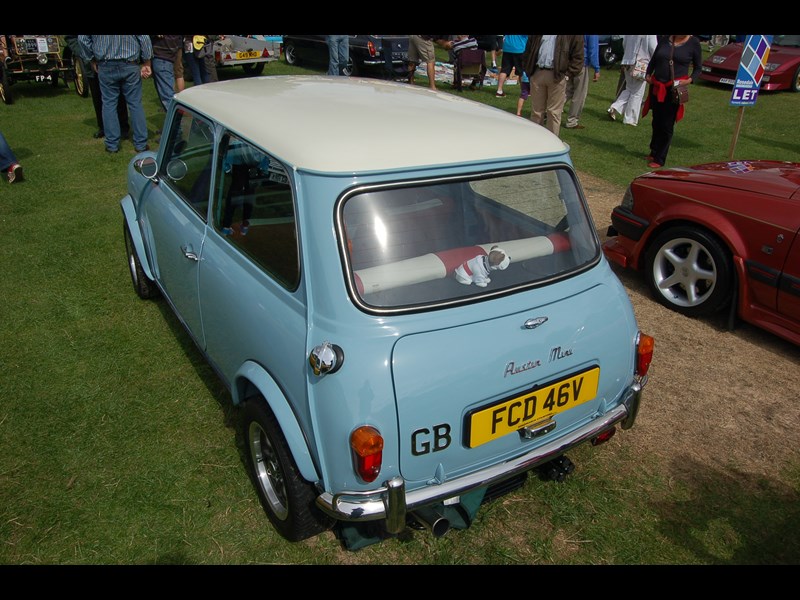We guide you through the grand finale of a tiny favourite from the last decade of Mini Cooper production
While the differences are vast compared with early Minis, you still get that go-kart feel, with super-direct steering and the typical bouncy ride. The first time you chuck a Mini into a tight bend while barely slowing down will make you laugh.
The post-1996 Coopers are more refined, which takes the edge off the performance. The optional big wheels don’t help matters, but a Sport Pack equipped Mini will still make most other cars seem oversized and clumsy.
The downside is that a proper Mini really is very small. You should bear that in mind because while the Mini generates plenty of smiles, you might start suffering after too long at the wheel.
Performance is brisk rather than super-fast, with the taller gearing of later cars taking some of the spark out of the acceleration. On paper, they’re actually pretty slow. Sitting as low as you do, theyfeel quicker than the paper suggests. Whether a later Mini is for you depends entirely on what you want. It’s still an awful lot of fun, and the tuning possibilities are nearly endless.
VITAL STATISTICS
Mini Cooper 1.3i Sport Pack
Engine 1275cc/4-cyl/OHV
Power (bhp@rpm) 63bhp@5500rpm
Torque (lb ft@rpm) 70lb ft@3000rpm
Top speed 86mph
0-60mph 13.3sec
Consumption 30mpg
WHAT TO LOOK FOR
BODYWORK & CHASSIS
Corrosion is the number one enemy. Sadly these later Minis actually corrode far more readily than those built in previous decades. There are few places for rot to hide, so check all seams and inspect very carefully around the nose and scuttle. The bigger windscreen rubber fitted from 1996 covers unpainted metal, so rot here is very common. Check the seams very carefully around the headlamp panel, where it meets the front wings – corrosion is common here on any Mini. If replacement panels have been fitted, check the panel gaps, especially around the bonnet.
The Sports Pack added a chunky bodykit and 13" wheels. It looks great, but doesn’t do anything for handling or performance. In fact, it detracts a fair bit from both. Mini fans really do like them though, and it’s rare to see a 1996-on Mini without it. Incidentally, Mini owners do like to bling things up, so you can expect extra brightwork or even tuning modifications such as tweaked engines and sports exhausts. There are plenty of Minis out there, so make sure you don’t buy something with ill-conceived modifications that could affect the resale value later. There’s a growing market for cars in entirely standard condition.
Sills are a common corrosion point, as are the inner rear wheelarches either side of the rear seat. If you can, lift the carpet to check the floors. If you can’t, you’ll need to raise the car carefully to check the underside. Most people won’t bother to do this, but it could save big bills if you do. Even a mirror on a stick should give some indication of condition. The front footwells are the key rot spot.
Open the boot and check for corrosion and dampness around the boot floor. Later Minis have the screenwash bottle as well as the battery located here, as space was always tight in the engine bay. Again, it’s an easy area to overlook and corrosion can eat away unchecked and out of sight.
ENGINE
These later Coopers all use the 1275cc A-series engine, but with a vast number of changes. The original relaunched Cooper – known as RSP and introduced in 1990 – in effect uses an MG Metro engine, with a carburettor. 1650 RSPs were produced before a regular production Cooper took over with the same engine. Single-point fuel injection was fitted from October 1991 (spot the ‘1.3i’ badge on the boot). A major overhaul in 1996 saw multi-point injection fitted and a move to a front-mounted radiator. Later engines tend to be more reliable, but the A-series foibles are well known – blue exhaust smoke when thrashed and neglected being the main one. They all tend to drop a little oil.
ELECTRICS
From 1996, there were airbags, side impact beams in the doors and chunkier seats with walnut dashboards. Make sure the SRS light comes on with the ignition, but that it swiftly goes out again. If it doesn’t, there is an airbag fault. Metro-style seats were fitted from 1993. Check for damp if a sunroof is fitted.
RUNNING GEAR
A four-speed gearbox was fitted to all Minis, but a Jack Knight five-speed unit could be fitted optionally. Watch for crunchy gearchanges suggesting a synchromesh or clutch issue, though the change was always notchy. Gearing was taller for later Minis, so they should be very much quieter at speed.
OUR VERDICT
These later Minis may lack the raw edge of earlier cars, but they’re still enormous fun with bags of character. Only 237,664 were sold in the last decade of its life – about how many were sold in 1967 alone, so they’re not that common, despite the high survival rate.
Prices have certainly tumbled for these Minis, but it’s been some time since they stopped. After several years of plateau, we suspect prices will begin to creep up again, but be warned that the people will only be interested in the very best. So battle with corrosion and keep it at bay to enjoy the highest prices. Then lock it up indoors, as Minis still disappear to thieves!














